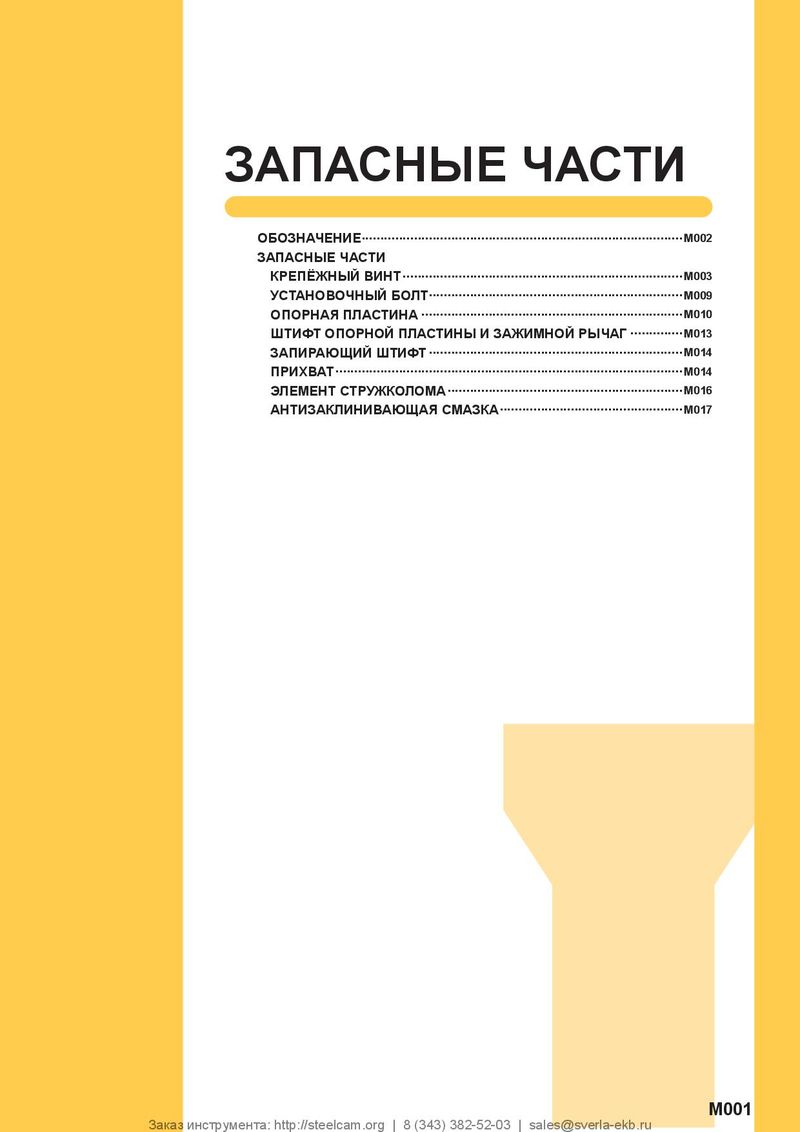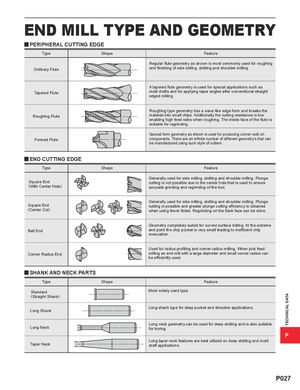Общий каталог Mitsubishi 2020 - 2021 - страница 1742
Навигация
 Каталог Mitsubishi Materials запасные части
Каталог Mitsubishi Materials запасные части Каталог Mitsubishi Materials резьбонарезной инструмент
Каталог Mitsubishi Materials резьбонарезной инструмент Каталог Mitsubishi Materials СНП с CBN и PCD для токарной обработки
Каталог Mitsubishi Materials СНП с CBN и PCD для токарной обработки Каталог Mitsubishi Materials сверлильные инструменты
Каталог Mitsubishi Materials сверлильные инструменты Каталог Mitsubishi Materials расточной инструмент
Каталог Mitsubishi Materials расточной инструмент Каталог Mitsubishi Materials пластины для точения
Каталог Mitsubishi Materials пластины для точения 
END MILL TYPE AND GEOMETRY y PERIPHERAL CUTTING EDGE Type Shape Feature Regular flute geometry as shown is most commonly used for roughing Ordinary Flute and finishing of side milling, slotting and shoulder milling. A tapered flute geometry is used for special applications such as Tapered Flute mold drafts and for applying taper angles after conventional straight edged milling. Roughing type geometry has a wave like edge form and breaks the Roughing Flute material into small chips. Additionally the cutting resistance is low enabling high feed rates when roughing. The inside face of the flute is suitable for regrinding. Special form geometry as shown is used for producing corner radii on Formed Flute components. There are an infinite number of different geometry's that can be manufactured using such style of cutters. y END CUTTING EDGE Type Shape Feature Generally used for side milling, slotting and shoulder milling. Plunge Square End cutting is not possible due to the center hole that is used to ensure (With Center Hole) accurate grinding and regrinding of the tool. Generally used for side milling, slotting and shoulder milling. Plunge Square End cutting is possible and greater plunge cutting efficiency is obtained (Center Cut) when using fewer flutes. Regrinding on the flank face can be done. Geometry completely suited for curved surface milling. At the extreme Ball End end point the chip pocket is very small leading to inefficient chip evacuation. Used for radius profiling and corner radius milling. When pick feed Corner Radius End milling an end mill with a large diameter and small corner radius can be efficiently used. y SHANK AND NECK PARTS Type Shape Feature Standard Most widely used type. (Straight Shank) Long shank type for deep pocket and shoulder applications. Long Shank Long neck geometry can be used for deep slotting and is also suitable Long Neck for boring. P Long taper neck features are best utilized on deep slotting and mold Taper Neck draft applications. P027 TECHNICAL DATA